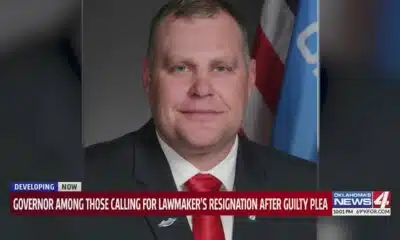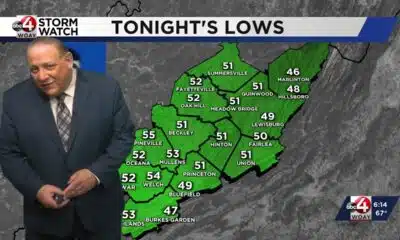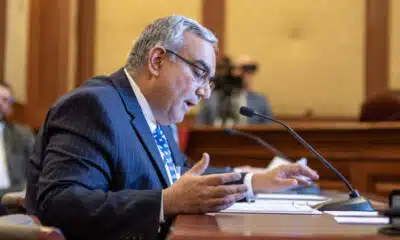News from the South - Texas News Feed
What Texas can learn from American Camp Association standards
“A rigorous accreditation program inspired Texas’ camp reforms. Here’s what that process looks like.” was first published by The Texas Tribune, a nonprofit, nonpartisan media organization that informs Texans — and engages with them — about public policy, politics, government and statewide issues.
Sign up for The Brief, The Texas Tribune’s daily newsletter that keeps readers up to speed on the most essential Texas news.
Train staff on various emergencies, file emergency plans with local emergency personnel, maintain communication methods in case phone and internet services go down, and teach campers how to respond during crises.
Seventy six youth camps in Texas must meet these requirements and dozens more to be accredited by the American Camp Association — the gold standard of camp safety and operation — and some of those measures are among the camp reforms that Texas lawmakers seek to implement following the deadly July 4 floods.
“Texas has a good set of minimum practices. But often, those might be several pages. We have 266 standards that is a literal book of standards, as opposed to a couple of pages,” said Henry DeHart, interim president and CEO of the American Camp Association. “The state is now asking the question, should they be doing more?”
Large camp safety omnibus legislation that will likely pass the Legislature in the coming weeks folds in some of the standards required for ACA accreditation, including requiring camps to train their staff and campers on various emergencies and responses, to have a plan with local emergency personnel, and to maintain operable communication methods. Other requirements of the bill not included in ACA accreditation include removing cabins from operation if they are located on the floodplain, maintaining redundant internet connections, and establishing floodplain safety requirements.
Less than two months after rising floodwaters killed at least 138 people, including 27 campers and counselors at Camp Mystic, the Texas camp industry is largely hesitant to say how much work — and the costs — will go into meeting the requirements of any new legislation.
A good comparison point, however, is to examine the ACA’s lengthy, and at times, expensive accreditation process, according to multiple ACA-accredited Texas camps who spoke to The Texas Tribune. About 10% of Texas’ more than 700 youth and adult camps are accredited by their organization. Camp Mystic was not ACA accredited.
/https://static.texastribune.org/media/files/3f332c4e618c910d38335fb2c8b4b9ec/0722%20Camp%20Camp%20Reopens%20EH%20TT%2039.jpg)
One of the main differences between the current state regulations and the standards for ACA accreditation is the level of detail required in the review process for emergency preparedness and overall safety. Currently, the state has 15 standards broken down to around 80 criteria compared to the over 200 standards for ACA, making for a more rigorous review process.
For example, the state requires a written safety plan to be in place, but ACA accreditation requires this to be reviewed and taught to staff and campers.
DeHart said that with such an unprecedented flood event, the standards might not have made much of a difference. However, for the peace of mind of parents and the safety of children, the state adopting their standards can only help, he said.
“We have been fielding calls from parents all over the country, and we have been encouraging camps to reach out to their parents, let them know what rigorous process they have in place, how they do training, what their system is, because we want kids coming to camp, and we want parents to feel good about sending your child to camp, and that all comes down to safety,” he said.
What are the standards of accreditation?
For the most part, camps across the nation are regulated at the state level, and there is no consistency in how they are meant to operate. For example, one state may require helmets and life jackets on the water, while another may not. The only way to determine this is to consult the relevant state laws.
To become one of the approximately 375 youth camps licensed and regulated by the Texas Department of State Health Services, operators must undergo a background check and inspection. To maintain their licenses, camps must undergo an annual inspection with DSHS.
Adam Buuck, associate deputy commissioner for DSHS, told lawmakers during a camp safety hearing earlier this month that the state’s camp inspectors are primarily trained for sanitation inspections, not emergency plans.
The ACA accreditation program provides a set of national standards for health and safety for all camps. The third-party peer review process is entirely voluntary and has no regulatory authority.
“It’s an educational program meant to help camps strengthen their practices around health and safety,” DeHart said.
Camps that are not accredited do not necessarily have lax safety standards, said Brandon Briery, chief operating officer of Camp CAMP, an ACA-accredited camp in Center Point. However, accreditation does ensure camps are thinking through the risks that exist to their campers through their stricter standards.
The ACA has 266 standards that a camp could meet as part of the accreditation process. They must meet 51 mandatory standards and any combination of several others that are part of the scoring process.
Some of the mandatory standards include:
- Annual contact with local emergency officials to notify them of the camp’s dates of operations and the relevant scope of programming.
- If the camp does not use 911 for emergency medical transportation because of how remote they are, the camp must have emergency transportation available at all times.
- Buildings used for sleeping must have at least two exits.
- A staff member with training in the appropriate level of first aid and CPR/AED must be on duty at all times when campers are present.
- All staff must receive training to minimize the potential of being in a 1:1 camper/staff situation when out of sight of others.
- The camp must require a criminal background check annually for all seasonal staff and at least every five years for year-round staff.
Some of the other standards that aren’t mandatory by the ACA but are part of the scoring process include:
- The camp should provide a safety orientation to campers, staff, and rental groups regarding camp boundaries and hazards, behavior expectations, and emergency procedures for natural disasters and other reasonably foreseeable emergencies.
- The camp should have written procedures specifying a system for emergency communication when campers or staff are away from camp, for contacting parents/guardians of minors, and for communicating with the media.
- A staff member trained on accident procedures should be in each vehicle transporting campers/staff.
- The camp should annually review security concerns, establish a written plan to address potential intruders and active threats, and train staff and campers on the necessary steps to take.
Camp operators must meet specific standards to even initiate the accreditation process and complete an educational course as part of their preparation. The second part includes an on-site visit by trained ACA volunteers, such as Briery, who observe the camp in action, look for posted safety rules, and more.
The process is intended to be collaborative and allow for camps to rectify shortcomings in their policies, Briery explained.
“As a visitor, I am really only saying, do I observe this or do I not observe this. It’s either yes or no. And if you take a no on something that is not a mandatory standard, then that is okay,” he said.
/https://static.texastribune.org/media/files/c75db13291b2b50e3518330fcc24c3e4/0613%20Camp%20Well%20RB%20TT%2003.jpg)
Peer reviews are conducted every few years to ensure the camp is adhering to best practices. Those within the program also gain access to national updates on safety policies and recommended best practices.
Camp operators also use ACA accreditation as a marketing tool to attract families who value safety, and DeHart said it can be helpful in court when a tragic situation unfortunately occurs, as it demonstrates that staff went above and beyond in implementing their safety measures.
Even with the extra support, Texas’ participation in the accreditation process is lower than the national average.
What are the challenges to accreditation?
The ACA has had some form of standards for camps nationally for 75 years. Yet, many youth camps are unaware of these standards, which is one of the main barriers to getting a national consensus on safety standards.
“At the most basic level, believe it or not, it’s awareness,” DeHart said. “The ACA has been around for 110 years. Yet, a whole bunch of camps out there aren’t even aware that ACA is here to support them and help them advance their health practices.”
There is also an annual cost associated with accreditation and that is often one of the main barriers DeHart hears from camps. ACA scales that cost based on the size of the camp, with the annual fee ranging from $800 to $1,000 for larger camps.
It also costs money just to meet the standards required to initiate the accreditation process. Some of the standards require specific equipment, such as helmets and goggles, as well as specific measures for motor vehicles, among other requirements. This doesn’t include the hours that staff, who are primarily college students, must put in to review the safety protocols for each activity.
These start-up costs could also be the reality for many camps if Texas lawmakers pass their camp safety bills.
“It takes a lot of work to prepare for 266 standards, to have the documentation, and some smaller camps sometimes feel squeezed by that,” DeHart said. “We do offer our staff to support them, but at the end of the day, it takes some work.”
Nearly 80% of the camps in the country are nonprofits, and adding expense for accreditation might not seem worth it. But DeHart pushes back against that line of thinking.
“If you think about the cost for something like negligent injury on your campgrounds, it’s a pretty reasonable cost,” he said. “Usually, we can get past the cost barrier if we can talk with somebody and help educate them about that, but it does take a lot of effort too.”
Texas isn’t the first state to use some of the ACA standards as part of their regulations. He doesn’t believe accreditation should be mandated, but there might be some ways to reward camps that do.
“Some states have it where if you are accredited, your camp is eligible for certain funding or things like that. But the main thing we want to do is encourage camps to engage in these health and safety practices in any manner, because they’re going to help keep kids safe,” he said.
/https://static.texastribune.org/media/files/7ffea6b3eaa5a71507f96ba67868179a/0613%20Camp%20Well%20RB%20TT%2007.jpg)
More all-star speakers confirmed for The Texas Tribune Festival, Nov. 13–15! This year’s lineup just got even more exciting with the addition of State Rep. Caroline Fairly, R-Amarillo; former United States Attorney General Eric Holder; Abby Phillip, anchor of “CNN NewsNight”; Aaron Reitz, 2026 Republican candidate for Texas Attorney General; and State Rep. James Talarico, D-Austin. Get your tickets today!
TribFest 2025 is presented by JPMorganChase.
This article originally appeared in The Texas Tribune at https://www.texastribune.org/2025/08/29/texas-aca-american-camp-association-accreditation/.
The Texas Tribune is a member-supported, nonpartisan newsroom informing and engaging Texans on state politics and policy. Learn more at texastribune.org.
The post What Texas can learn from American Camp Association standards appeared first on feeds.texastribune.org
Note: The following A.I. based commentary is not part of the original article, reproduced above, but is offered in the hopes that it will promote greater media literacy and critical thinking, by making any potential bias more visible to the reader –Staff Editor.
Political Bias Rating: Centrist
The content presents a factual and balanced overview of youth camp safety standards and accreditation processes in Texas, focusing on practical measures and legislative responses without evident ideological framing. It includes perspectives from industry experts and lawmakers from both parties, emphasizing safety and regulatory considerations rather than partisan viewpoints, which suggests a centrist approach.
News from the South - Texas News Feed
Kerr youth camps seek Patrick’s help on proposed flood rules
“Kerr County youth camps appeal to Dan Patrick on proposed floodplain restrictions” was first published by The Texas Tribune, a nonprofit, nonpartisan media organization that informs Texans — and engages with them — about public policy, politics, government and statewide issues.
Sign up for The Brief, The Texas Tribune’s daily newsletter that keeps readers up to speed on the most essential Texas news.
The owners of three Kerr County youth camps have asked Lt. Gov. Dan Patrick to reconsider some of the stricter new flood safety requirements contained in two bills before the Texas Legislature that have been filed as a result of the tragic July 4 Guadalupe River flooding that killed 27 Camp Mystic campers.
Two camp safety bills, House Bill 1 and Senate Bill 1, would withhold state licensing if cabins are located in a floodplain. A week ago, both bills were passed by their respective home chambers.
Late Friday, The Texas Tribune obtained an Aug. 28 letter sent to Patrick by the owners of Camp Waldemar, Vista Camps and Camp Stewart. In it, the camp owners cite the cost of rebuilding cabins and ask Patrick to “work with us” by having an expert to propose “a safe and professionally analyzed solution through the Texas Water Development Board for the 100-year floodplain prohibition.”
The camp owners also insisted that there “must be meaningful financial support, whether through insurance, state grants, or other funding mechanisms, so that the burden does not fall solely on families, camps, and communities.”
State Sen. Charles Perry, R-Lubbock, who chairs the Senate Select Committee on Disaster Preparedness and Flood and the primary author of one of the bills, told the Tribune last week there would be no state assistance for camps to comply with pending legislation if it passes.
“No, camps are private enterprises,” Perry told The Texas Tribune after family members of the 27 Camp Mystic flood victims testified before his committee on Aug. 20. “The state’s not rebuilding private sector camps.”
The Texas Tribune reached out to Patrick’s office for comment on the letter, which was also forwarded to members of the Texas Senate and Gov. Greg. Abbott, and did not get an immediate response. The Tribune left phone messages at all three camps, asking for more detail and comment on the letter, but none were returned. The Tribune reached Meg Clark, executive director of Camp Waldemar late Friday. She confirmed the contents of the letter but declined to offer additional comment.
The two special legislative committees appointed after the July 4 disaster so far in public hearings have resisted discussing restricting development in floodplains statewide. Requiring camps to move cabins out of the floodplain was the biggest step they had taken in that direction — and is a major piece of the legislation. Flooding experts say getting kids out of risky areas as they sleep is a clear way to help protect them.
Originally, legislators had planned just to require that camps evacuate kids from campgrounds in the floodplain if the weather service issued a flash flood warning and to install ladders on cabins so campers could climb onto rooftops if the situation grew dire and for some reason they hadn’t evacuated. But parents of the kids who died at Camp Mystic pushed to get more restrictive, camp-focused legislation on the table.
“The combination of devastating floods and the heavy financial burden proposed under new state regulations presents an impossible challenge,” the camps’ letter stated. “Collectively, our camps would face millions of dollars in mandated rebuilding costs for cabins subjected to the prohibition that did not sustain damage by recent flooding. These additional burdens would come on top of already significant flood repairs, operational expenses, and existing loans.”
A representative for the Camp Mystic families’ campaign for camp safety said, “We believe the parents’ testimonies and recent media interviews speak for themselves. We have no comment about this letter, but we support lawmakers’ efforts to pass SB1 and HB1 to ensure common sense safety reforms are in place for the 2026 summer camp season.”
More all-star speakers confirmed for The Texas Tribune Festival, Nov. 13–15! This year’s lineup just got even more exciting with the addition of State Rep. Caroline Fairly, R-Amarillo; former United States Attorney General Eric Holder; Abby Phillip, anchor of “CNN NewsNight”; Aaron Reitz, 2026 Republican candidate for Texas Attorney General; and State Rep. James Talarico, D-Austin. Get your tickets today!
TribFest 2025 is presented by JPMorganChase.
This article originally appeared in The Texas Tribune at https://www.texastribune.org/2025/08/29/texas-legislature-flooding-youth-camps/.
The Texas Tribune is a member-supported, nonpartisan newsroom informing and engaging Texans on state politics and policy. Learn more at texastribune.org.
The post Kerr youth camps seek Patrick’s help on proposed flood rules appeared first on feeds.texastribune.org
Note: The following A.I. based commentary is not part of the original article, reproduced above, but is offered in the hopes that it will promote greater media literacy and critical thinking, by making any potential bias more visible to the reader –Staff Editor.
Political Bias Rating: Centrist
The content presents a balanced report on legislative efforts related to flood safety regulations for youth camps in Texas. It includes perspectives from camp owners concerned about financial burdens and state legislators emphasizing private enterprise responsibility, without overtly favoring either side. The article maintains a neutral tone and focuses on factual reporting, reflecting a centrist viewpoint.
News from the South - Texas News Feed
Rizzbot secrets revealed: Who is the mechanical man stalking Austin?
SUMMARY: Rizzbot is a three-foot-tall humanoid robot, wearing a cowboy hat, gaining popularity in Austin with nearly 500K TikTok followers and over 20 million likes. Built on a Unitree G1 platform costing about $15K-$50K with upgrades, Rizzbot weighs 77 lbs and performs dances taught at the University of Texas through motion capture technology. Operated remotely by an anonymous former YouTuber and biochemist, Rizzbot entertains crowds with preprogrammed moves, embodying charisma (“rizz”). UT Austin researchers developed its fluid motions and safety features. Seen around Austin and other cities, Rizzbot challenges stereotypes, making robots approachable and fun.
The post Rizzbot secrets revealed: Who is the mechanical man stalking Austin? appeared first on www.kxan.com
News from the South - Texas News Feed
Concerns erupt in town hall meeting over potential Leander ISD school closures
SUMMARY: Leander ISD in Texas is considering closing three elementary schools—Steiner Ranch, Laura Welch Bush, and River Ridge—due to under-enrollment and budget deficits caused by state underfunding. The district proposes three options: consolidating campuses (saving $4.15 million), updating staffing guidelines ($1.78 million savings), or hybrid utilization ($3.55 million savings). Each school operates below 60% capacity but holds an A rating from the Texas Education Agency. Parents and a board member oppose closures, citing community impact, teacher-student ratios, and future population growth. Superintendent Bruce Gearing acknowledges concerns but stresses financial necessity. A final decision is expected October 9.
Read the full article
The post Concerns erupt in town hall meeting over potential Leander ISD school closures appeared first on www.kxan.com
-
News from the South - Texas News Feed4 days ago
Racism Wrapped in Rural Warmth
-
News from the South - Texas News Feed7 days ago
DEA agents uncover 'torture chamber,' buried drugs and bones at Kentucky home
-
News from the South - Missouri News Feed6 days ago
Donors to private school voucher program removed from Missouri transparency site
-
News from the South - Florida News Feed6 days ago
Ukraine’s independence-era voices say Russia’s effort to keep control has lasted decades
-
News from the South - Texas News Feed5 days ago
Texas Democrats’ walkout prompts GOP retribution
-
News from the South - Alabama News Feed5 days ago
Child in north Alabama has measles, says Alabama Department of Public Health
-
News from the South - Tennessee News Feed2 days ago
New developments in Pauline Pusser case
-
News from the South - Tennessee News Feed5 days ago
A marsh bird found in Tennessee wetlands is endangered. FWS is drafting a plan.








































